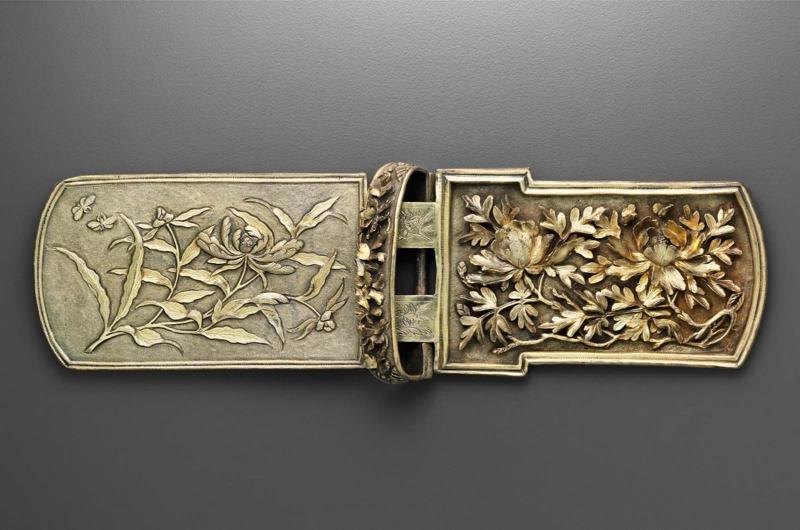Belt ornament with chrysanthemum design
12th–13th century
Object PlaceKorea
Medium/TechniqueGilt silver with repousse decoration
DimensionsL. 6.2 cm (2 7/16 in.), w. 23 cm (9 1/16 in.), d. 0.5 cm (3/16 in.)
Credit LineGift of Robert Treat Paine, Jr.
Accession number60.1321
On View
On viewClassificationsJewelry / Adornment
DescriptionThis Korean Goryeo dynasty belt buckle is an excellent example of the period’s sophisticated metalwork. Two cast-silver frames form the buckle’s two decorated panels, which probably were attached to a leather belt. The buckle’s high-relief work on the right side depicts tree peonies, leaves, branches, and blossoms. The left panel features herbaceous or bush peonies in low relief. Here, the artist worked the metal from behind using a beating and impressing technique similar to repoussé.1 Peonies are auspicious symbols in Korea associated with prosperity, nobility, feminine beauty, and love.
Yvonne J. Markowitz, “Belt Ornament” in Artful Adornments: Jewelry from the Museum of Fine Arts, Boston by Yvonne J. Markowitz (Boston: MFA Publications, 2011), 129.
ProvenanceBy 1932, Robert Treat Paine, Jr. (b. 1900 - d. 1965), Cambridge, MA [see note]; 1960, gift of Robert Treat Paine, Jr. to the MFA. (Accession date: November 9, 1960)
NOTE: Lent by Robert Treat Paine, Jr. to the MFA in 1932.
NOTE: Lent by Robert Treat Paine, Jr. to the MFA in 1932.
14th century
12th–13th century
late 10th–early 11th century
about 10th–11th century A.D.
about A.D. 700
9th century A.D.
17th century
17th century
17th century

